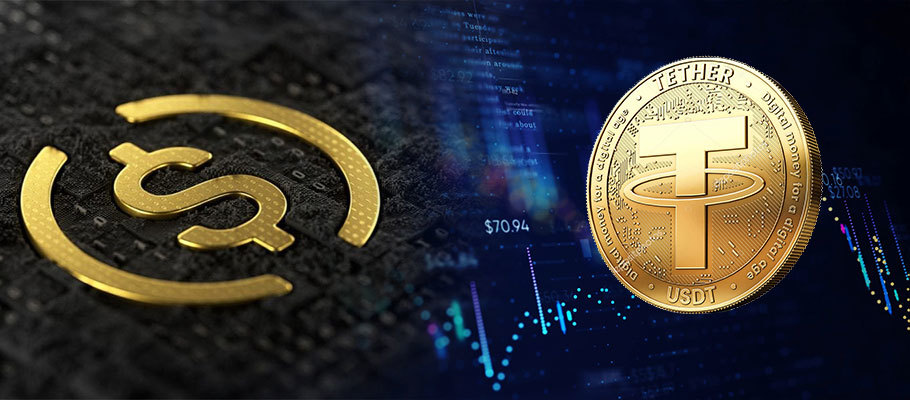
Published: August 20th, 2021
Circle CEO Jeremy Allaire nailed his company’s colours to the mast this week when he wrote that Circle is on the way to becoming a federally-chartered bank, and its token USDC is set to grow its circulation to ‘hundreds of billions of dollars.’
The comments come at a time when stablecoins, crypto tokens that are price-pegged to a fiat currency, are having a moment in the sun. They’ve been popular with crypto traders as a hedge against volatility. Now traditional finance has started to take notice and use stablecoins as a more efficient way of moving their money around.
The stablecoin market leader is Tether, but several competitors are nipping at its heels. There might be an opportunity for USDC, the number two stablecoin by market capitalisation, to jump to the front of the pack.
US regulators are asking difficult questions about Tether's somewhat novel accounting practices. Circle, however, has compliance and commercial worries of its own, a situation that makes the company’s aspirations for USDC easier said than done.
Stablecoins have gained favour with crypto users because they offer the same benefits as other blockchain-based currencies like Ethereum or Bitcoin, but minus the volatility. For the long list of firms that issue them, stablecoins can be an easy way to make money.
When people buy stablecoins with US dollars, companies like Tether don't pay any interest. Instead, the dollars they receive are used to create reserves that back the stablecoins. It’s the reserves that can generate a profit. Circle, for example, says it expects to make USD 40 million this year from its USDC operations.
But with opportunity comes a dilemma: how aggressively should stablecoin issuers invest their reserves? Placing them in assets like bonds and equities can deliver higher yields, but it could also leave the stablecoin itself less than stable.
When Circle admitted in July that USDC wasn’t backed 1-to-1 in its cash reserves, contrary to what the company had always claimed, competitors piled on. Stablecoin issuer Paxos published an illustrated blog post that claimed to prove USDC wasn’t a stablecoin at all. Circle had partially backed USDC with bonds and commercial paper. To be a true stablecoin, Paxos said, all of its reserves should have been in cash.
According to Circle executives, the whole stablecoin industry will soon find itself heavily regulated, and Circle is ready to ensure that USDC complies with any new rules. Whether that means Circle is prepared to change its reserve mix remains unanswered.
This begs the question: is Circle actually putting consumer assets at risk? On first pass, it seems Paxos might have over-egged its assertions. The non-cash assets Circle uses are relatively safe and unlikely to experience wild price swings.
But that doesn't mean zero risk. According to James Koening, a former currency analyst who writes about stablecoins, the real question is, what would happen to USDC if another 2008-era banking crisis broke out?
In that scenario, users might do a run on Circle and swap their USDC tokens back to cash. That would force Circle to liquify its assets in order to honour all the cashout requests. If that occurred, Koening says, time constraints could force Circle to sell the assets at less than market value, or potentially not at all. This would crater USDC’s price, probably below its USD 1 dollar peg, and turn USDC unstable.
If a fresh financial crisis lands, it's foreseeable that any run on stablecoins would be rapid and intense, much more so than you’d see in traditional financial markets. A rush to redeem stablecoins would play out in hours rather than days. And the trigger doesn’t have to be a full-on financial crisis. It could kick off because of something particular to stablecoins, a hack or the discovery of a bug in a token’s protocol.
For now, these worries are theoretical, but it's revealing that Coinbase, a Circle business partner, quietly removed the text from its website that said every USDC token was backed by ‘one US dollar.’ The change was seen as a way for Coinbase to fend off any future lawsuits should Circle’s reserves mix prove to be less than fail-safe.
Circle is in the process of launching an IPO and has to convince investors that USDC is a safe and growing line of business. That’s probably why the company made its intentions to become a federally chartered bank public. That change in status would help calm any investors' fears about regulatory risk.
At the moment, Circle uses money transmitter licenses issued by individual US states, an operating model adopted by many digital financial services companies, including PayPal.
Other stablecoin issuers have gone a different route to obtain legal approval to operate. Gemini, for example, relies on a dedicated stablecoin regulatory framework created by the state of New York. Tether takes a riskier approach by operating overseas.
If Circle takes its plans for national bank status forward, it could find itself compelled to carry a significant capital cushion. This could be hard to achieve, especially if it also has to swap the bonds and commercial paper in its reserves with cash or something mega-safe like T- Bills that offer a near-zero return.
On the upside, Circle has mainstream traction, sealing partnerships with payment giants Visa and Mastercard. But uncertainty still looms, especially as its plan to be a bank is only an aspiration.
The company has yet to file the necessary paperwork. Meanwhile, the Federal Reserve is ready to publish an analysis of the stablecoin market in September. Its recommendations could force Circle and other stablecoin issuers to alter how they operate, perhaps leaving them little choice but to change their reserves' structure to assuage investors and regulators.
Circle may yet succeed in its objective to win the stablecoin wars. But a lot of things will have to go right for that to happen.